On the Road: Cordova to Port Townsend
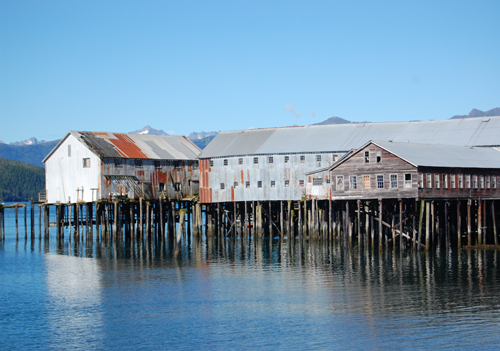
September is again becoming a month of transition for us, getting ready for the winter, securing Tamara in Cordova, Alaska and returning to our home in Port Townsend, Washington. Last year the move off the boat to land and returning to our home after ten years on Tamara was quite dramatic. But it's now becoming easier, as we're getting down the routine.
This season the normally tempestuous September weather in the Prince William Sound area was instead clear, beautiful, and calm for much of the time. All of the maintenance and lay-up work that's necessary, particularly when leaving a boat for the Alaskan winter, was made far easier by this cooperation. And of course it made walking about town, as well as hiking, a great pleasure. But this would all come to an end come October, with one of the strongest storms Mark has ever seen here in that time of year.
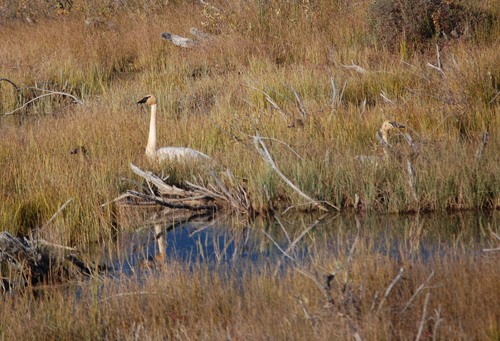
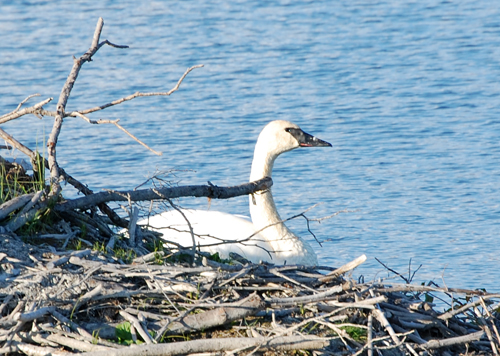
Once again Tamara's cockpit and after-deck was shrink-wrapped with a special industrial plastic to protect against snow and freezing. This process requires some preparation and a support structure, but the real amusement comes when wielding the enormous propane-fired tool that heats the material and induces the shrinkage. The trick is getting to the proper temperature without burning completely through the plastic. If you do, you've got to first smother the flames, then repair all the holes with a special eight inch wide plastic tape. We completed the job, but had to fix plenty of holes.
The original plan had been to leave our 1994 Chevy Astro van, which Mark had driven north in April, in Cordova. Outfitting, maintaining, provisioning and so on can be made much easier with the help of the van. But the need for a vehicle at home that can haul “stuff” for our various home improvement projects forced the revision of that plan, and it was decided that we would drive the 2,250 miles south together. That would not only get us and the considerable freight we'd amassed home, but also give us a chance to really enjoy a unique part of the world that both of us love very much. We've driven this remote route many times, starting in 1975 when Mark first went north as a legal services attorney, and it remains a favorite road trip - or as Mark calls it ,”A vehicular assault on North America.”
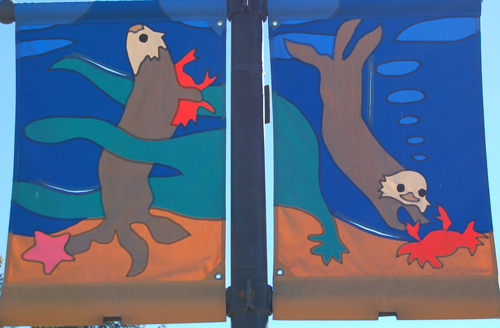
For the last 20 years, Cordova has attracted the more adventurous foreign cruising boats as a winter port. It's a great place to spend the season with it's ski hill and other winter activities, and the people have a genuine curiosity for fellow seamen. This year Helen and Ian on sy Kotuko from New Zealand chose Cordova to winter over. We enjoyed getting to know them, swapping cruising stories, and introducing them to some of our friends who live in town full time. In fact they secured their boat in Tamara's slip in the harbor, while we moved her to that of a friend.
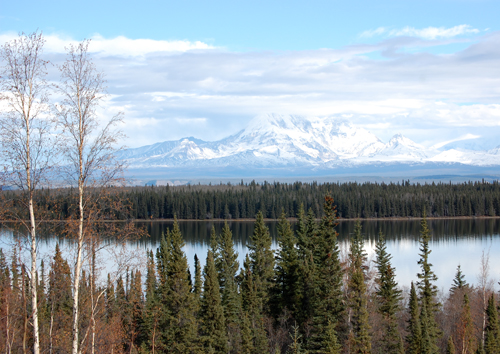
The first leg of our trip was on the new high-speed catamaran car ferry, mv Chenega, from Cordova to Valdez. Our original reservation on Friday, October 1st had been canceled by the Coast Guard Captain of the Port due to very high storm force winds, delaying departure until Sunday the 3rd. We were hoping that this was not going to be a hint of things to come. But once we crested Thompson Pass out of Valdez, the sun came out and the views were incredible. The first official vista turnout gave a beautiful view of Mts. St. Elias and Wrangell. During the first day of driving, a fox, coyote and a porcupine crossed the road, all narrowly avoiding the designation “road kill”. Spotting wildlife is one of our favorite pastimes on this drive.

Being that we are officially retired, yet are set on adventuring as long as possible, cost is a major factor in all our decisions. The cost of fuel to get the van south was going to be about $500, so to keep the total cost down we planned on camping each night. The trick would be to find campgrounds that were still open, now that the summer tourists were gone and the snow was soon to come. This would also require that we stop while it was still daylight. Late in the afternoon of our first day we spotted a campground at the Tetlin National Wildlife Refuge, open and free! All the state-run campgrounds were closed, but the U.S. Fish and Wildlife Service had a better understanding of the pleasures of late season outdoor activity. After setting up camp we walked around the area and observed ducks and geese, and several beavers busy getting their “house” ready for the winter, working the ice edge in the lake next to the camp.
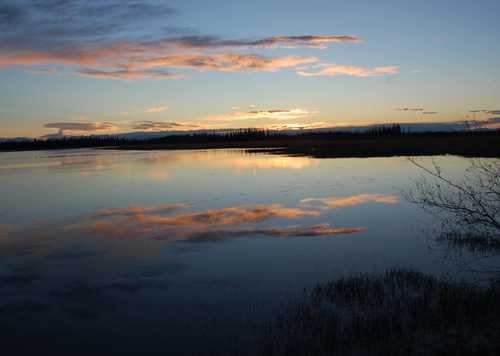
Day 2: It was obvious that winter was approaching, as many of the small ponds were beginning to freeze and there was a dusting of new snow on the mountain tops. Another beautiful, sunny day as we drove through Kluane National Park, Yukon, Canada. That night we had a Yukon provincial campground, thirty kilometers south of Whitehorse, all to ourselves. There was lots of fire-wood ready and stacked for camper's use, and excellent CBC programming was on the radio. What more could we need! We awoke in the morning to a light dusting of snow on the ground, which made the scene all the more beautiful.
Day 3: As we pulled out of the campground and headed south, Mark noticed that the alternator was not charging. We immediately turned around and headed back toward Whitehorse, hoping that we'd find an auto-parts store before the battery failed and all electrical systems shut down. And of course we hoped an alternator would be readily available and we'd not have to wait as one was ordered. Mark always has tools in the vehicle for such emergencies. Luck was with us, an alternator found, space made available for the repair, and after a two hour delay we were back on the road. Highlight of the day: a herd of elk crossing the road.

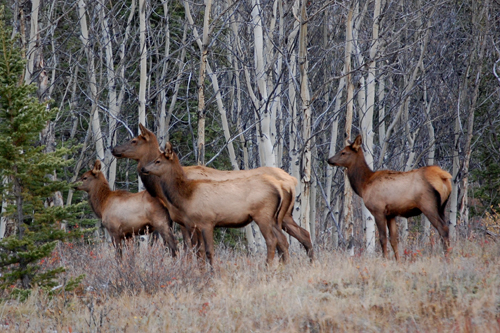
Destination for the night was the Provincial campground at Boya Lake on the northern end of the Steward-Cassiar Highway in western British Columbia. It's a beautiful spot and one we've stayed before, and this diversion from the original Alaska Highway is more remote and much less traveled. This road, only constructed in the 1980's primarily to serve a large mining complex, runs north and south along the inshore side of the coastal mountain range that borders western Yukon and the Alaska coast.
Day 4: Nancy had been looking to spot a moose for over a month. After not seeing any moose while on the Copper River Flats outside Cordova, she was determined to see one on the drive south. Unfortunately the only sign of moose she saw were on all the moose crossing signs along the road, and the in the pickups of hunters on the road, until …
In the morning, as we took a walk around the campground, we encountered the only other campers in the park. They had been out hunting moose for their winter's meat, and were in the process of butchering the previous day's kill. Nancy got her up close and personal look at a moose, head and hoofs still in the back of the pickup, but it wasn't exactly the image she'd had in mind.
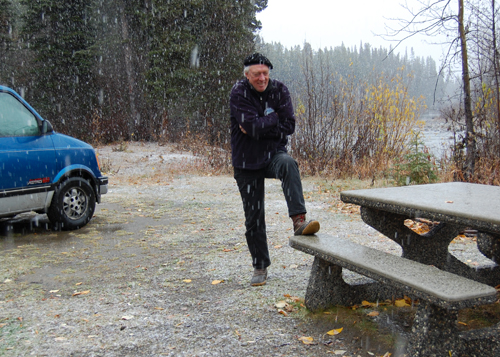
The first hint of the weather ahead was a truck heading north with snow on it's hood. By noon it was snowing hard, and it continued on and off for most of the afternoon. At the same time the fall colors were in full display, and the contrast between the dark gray sky, dark green conifers, and the bright yellow-orange leaves was stunning. Another beautiful day, in a spectacular part of the world—and we've seen a fair part of it.
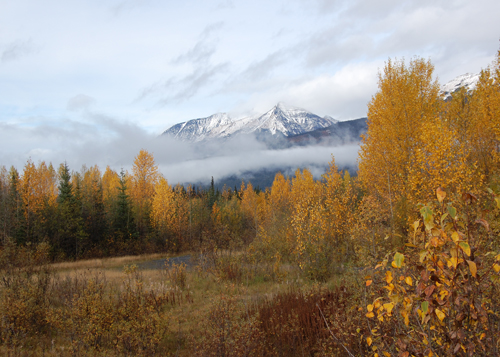

We were hoping to camp at the south end of the Steward-Cassiar Highway, but the campground was closed , as was the next just east of the junction with Highway 16 (out of Prince Rupert). So we were forced to stay in a motel ($85!) and catch up on TV. Combined with the price of the alternator, our low cost budget was shot!
Day 5: Once off the Stewart-Cassiar Highway civilization increased dramatically as we continued to head south through the ranch country of northern British Columbia, a place we've always admired very much. Another stunning day – what can we say. And luckily, a campground was open outside of Lac la Hache, attracting four other campers for the night. Payment at the campgrounds required an attendant to collect, yet no one had been available to pay at any of our stops. This good fortune helped offset the cost of the motel - at least a bit!
Day 6: An easy day back over the border into the US and a ferry crossing to Port Townsend. The house looked great – thank you Chuck!
October has brought beautiful fall weather to Port Townsend as well. The weather forecast for this La Niña winter in the Pacific NW is for it to be wetter and colder. Yet yesterday the record high for the date in Seattle was broken at 74°! All this good weather has allowed Nancy to get caught up on her outdoor yard and house projects.
Our slide show and lecture in Cordova, sponsored by the University of Alaska Sea Grant Marine Advisory Program and the Prince William Sound Community College, was very well received, and we were asked to repeat it. We will do so in the spring. On Sunday, December 5th we will present the show at the Northwest Maritime Center (click on Events in the upper right hand corner), here in Port Townsend, and again, in shortened form, at the Winter Wanderlust program in the theater at historic Fort Warden State Park February 16th. Anyone wishing to attend may contact us directly, and we can reserve tickets.
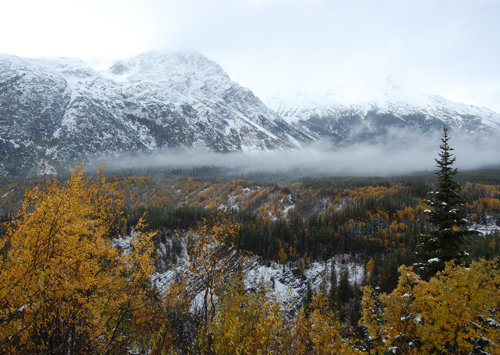
Labels: Alaska Highway, Cordova, Stewart-Cassiar



1 Comments:
Mark & Nancy: had to come home after the show this afternoon and post-gathering and view your latest postings. Nancy's continued fab fotos and your comments make for great Alaska-BC-PT roadtrip! Loved meeting all of your interesting, sweet, devoted friends...Kathy & Steve
Post a Comment
<< Home